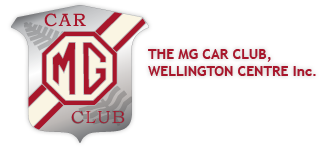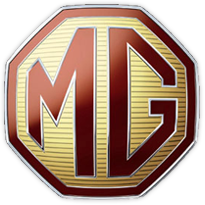Competitive Events
The Club runs a number of competitive events (other than racing) during the year. Some of these are held in conjunction with events such as the Easter Rally. The types of competitive events are:
CONCOURS
Concours competitions are generally run during the various Rallies. Here, the emphasis is as much on originality as the condition, although this also is very important. The general aim is to present a vehicle that is in the same, or better, condition than it was in when it left the production line. Unless original, modifications are not allowed, and components must be suitable for the year and model of the automobile. Even components or features fitted to automobiles of the same type, but in a different production year or trim level, are generally not allowed. Original-equipment-accessories from the manufacturers own range are allowed and some competitions allow after-market equipment and accessories, provided they are of the correct period. On top of this, automobiles must be presented in flawless visual condition, as with other Concours-grade cars.
must be suitable for the year and model of the automobile. Even components or features fitted to automobiles of the same type, but in a different production year or trim level, are generally not allowed. Original-equipment-accessories from the manufacturers own range are allowed and some competitions allow after-market equipment and accessories, provided they are of the correct period. On top of this, automobiles must be presented in flawless visual condition, as with other Concours-grade cars.
SPRINTS
Various sprint events are run from time to time by the club, usually in conjunction with a rally. There are several types of sprints:
Flying Start Sprints Often run on an airport and strictly controlled for safety- Standing Start Sprints May be run on closed roads or airport runways. Winner has the best time over a set course
Bent Sprints Much the same configuration as a Standing Start Sprint but will have corner/s or uses cones on a straight to alter the course
AUTO CROSS
Autocross is a form of motorsports that emphasizes safe competition and active participation. An autocross is a timed competition where drivers navigate one at a time through a defined course on either sealed or unsealed surfaces. Autocross differs from road racing or oval racing in that generally there is only one car on the track racing  against the clock rather than other cars. As an entry level motorsport it provides a stepping stone for drivers looking to move into other more competitive and possibly expensive forms of motorsport including rally and circuit racing.
against the clock rather than other cars. As an entry level motorsport it provides a stepping stone for drivers looking to move into other more competitive and possibly expensive forms of motorsport including rally and circuit racing.
Autocross courses are typically 1 to 2 kilometres in length and tend to place more emphasis on car handling and driver skill rather than on sheer horsepower. Courses may be temporary and marked by traffic cones or be permanent tracks with approval by a motorsport body.
MOTORKHANA
Motorkhana is a low-cost form of motorsport, unique to Australia and New Zealand but similar to autotesting in the UK and Ireland and somewhat similar to autocross in the US. It involves manoeuvring a car through tight tests as quickly as possible - one car at a time - on either grass or bitumen surfaces. This usually requires sliding and spinning the car accurately while maintaining speed through the test course. Some reversing is usually included. The majority of competing cars are small, front wheel drive, hatchbacks as they can handbrake slide round the cone or flag and the front wheels can still drive the car. Each test takes from 15 to 60 seconds to complete and is defined by flags. Hitting flags or going the wrong way incur time penalties which are added to the total time. A day’s competition - an event - usually includes 8 to 12 tests. Vehicle speed rarely exceeds 60 km/h (37 mph) but the tightness of the tests ensures the driver is kept very busy. Most competitors use normal road cars but some use specially built vehicles (motorkhana specials) which are much lighter and have specialised braking systems to facilitate the spin turns. Some motorkhana specials use modified automatic transmissions to facilitate rapid gearchanges between first and reverse gears. They usually use racing slick tyres for bitumen and concrete surfaces.
spin turns. Some motorkhana specials use modified automatic transmissions to facilitate rapid gearchanges between first and reverse gears. They usually use racing slick tyres for bitumen and concrete surfaces.
Awards are made to the driver with the lowest total time in each class. Classes separate production cars from specials and large production cars from small production cars. There are often classes for female drivers, and for junior drivers as young as 12.







